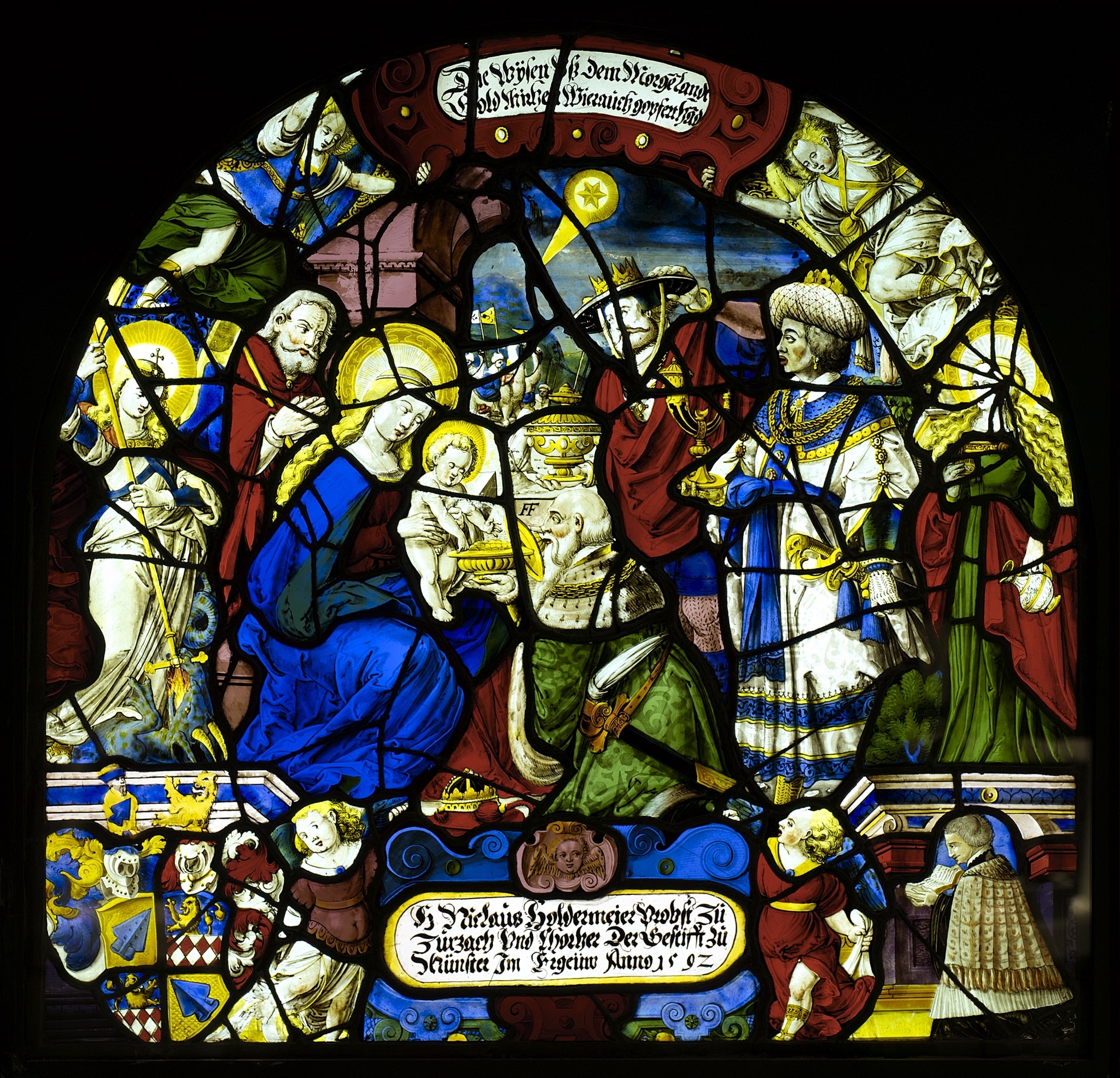The scene is densely populated; central is the seated Virgin holding her Divine Child as Joseph peeks over her shoulder. The Three Kings approach from the right; the oldest kneels, his middle-aged companion stands slightly to the rear, and the youngest, from Africa, stands to the front. In the distance is a star over riders on camels. A circular arch above the scene is inhabited by angels holding an inscription. Patron saints, male to the left, the Archangel Michael, and female to right, St. Verena stand at the base. The scene rests on an architectural platform. In front of the platform on the left is a coat of arms, and on the right, the donor at prayer. In the center, flanked by angels, is an inscription in an elaborate cartouche, similar to that above, also held by the angels. Figures are in vivid interaction. The faces are round and fleshy with tiny circular chins that set off the plumpness of the cheeks, most evident in female and youthful characters, such as the angels. Hair is profuse, often curly, and for women, frequently radiating in golden streams. Drapery treatment evokes a density of fabric where folds coalesce into dense clusters. Everything seems alive, from the animated gazes of the angelic supporters to the polka-dotted dragon who breathes fire while pawing at Michael’s staff.
11G183 · the Archangel Michael (often in armour with sword or lance)
11HH(VERENA) · female saints (VERENA)
46A122(HOLDERMEYER) · armorial bearing, heraldry (HOLDERMEYER)
73B57 · adoration of the kings: the Wise Men present their gifts to the Christ-child (gold, frankincense and myrrh)
Arms of Holdermeyer, Niklaus: Quarterly; 1 and 4 or a plowshare azure; 2 and 3 per fess in chief azure a lion rampant couped or in base chequy of argent and gules; crest: (LEFT) on a barred helm to sinister a demi-man garbed with the first with the charge upon his breast (RIGHT) on a barred helm to dexter a demi-lion rampant or; mantling of the colors.
Above the scene: Die Wÿsen Vβ Dem Morgēlandt/ Gold Mirhen Wierauch gopfert hād (The Wise men from the East offered gold, myrrh and incense)
Below scene: H. Niclaūs Holdermeier Probst Zū/ Zūrzach Vnd Chorher Der Gestifft Zū /Münster Jm Ergeüw Anno 1592/ FF (Mr. Niklaus Holdermeyer provost in Zurzach, and Canon of the collegiate church of Beromünster in Aargau (today in canton Lucerne), the year 1592)
FF
